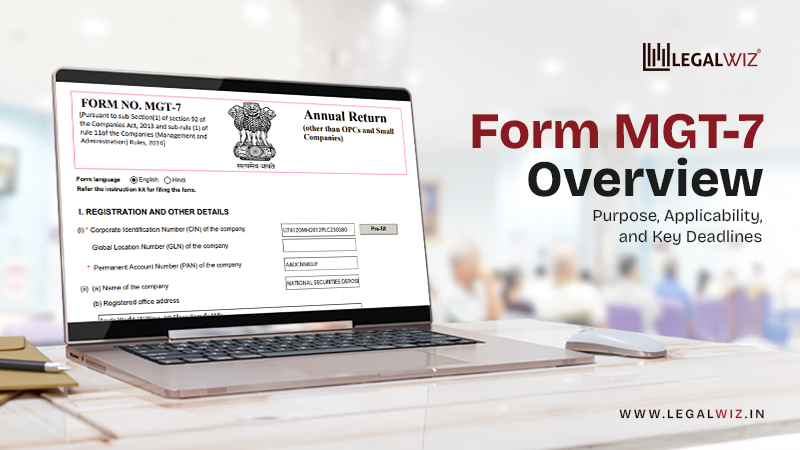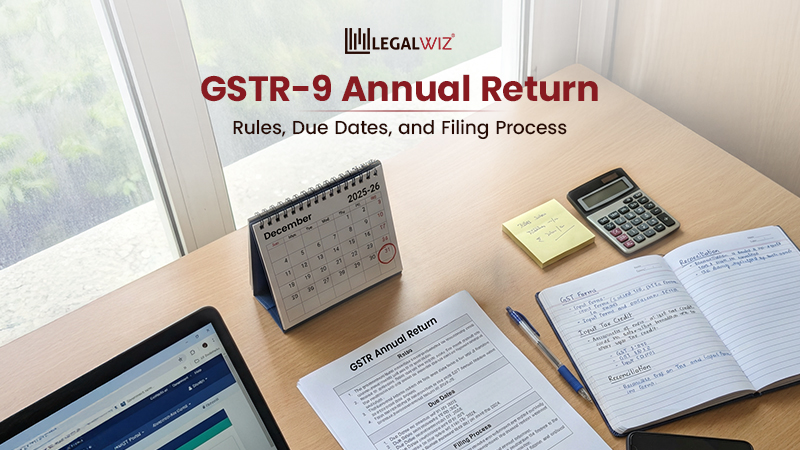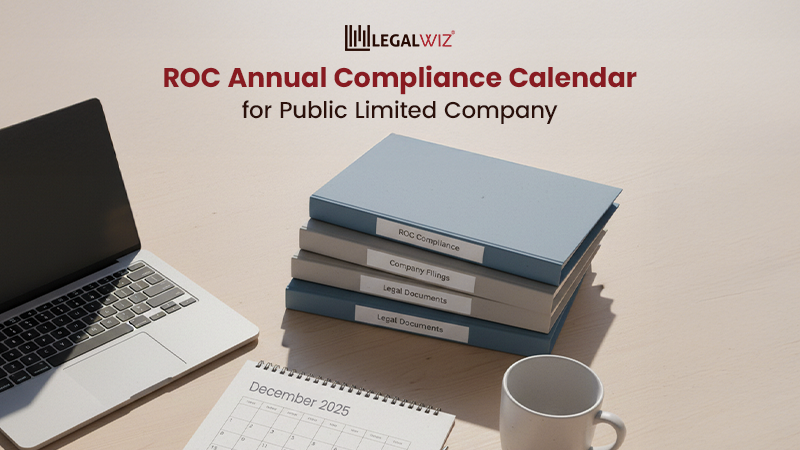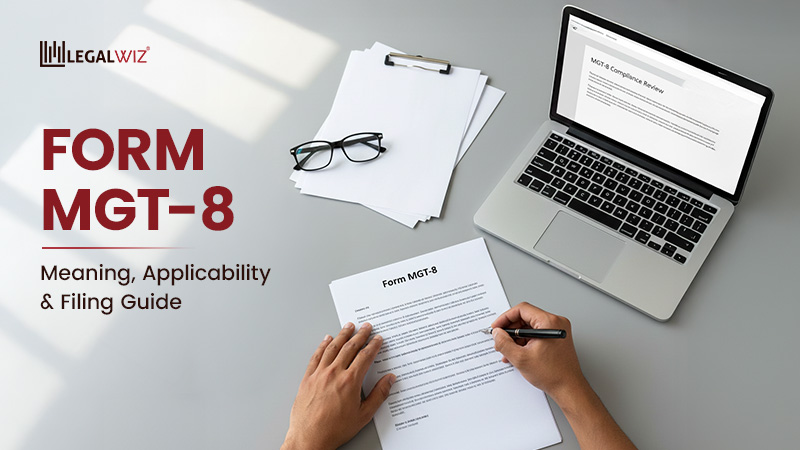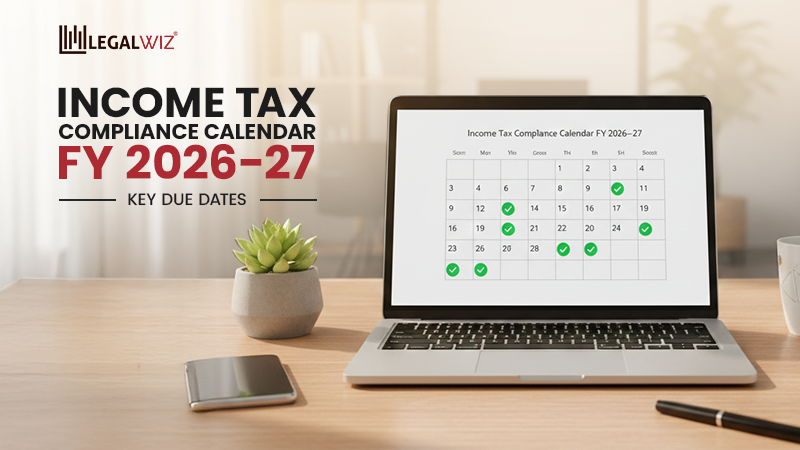Form MGT-7 Overview: Purpose, Applicability, and Key Deadlines
Every company registered under the Companies Act, 2013, must meet its annual compliance for Private Limited Company obligations. You must file your annual return with the Registrar of Companies (ROC) using Form MGT-7 or MGT-7A.
This e-form is distributed by the Ministry of Corporate Affairs (MCA) every year on March 31. It includes important details about the company, such as the directors, shareholders, and the number of shares each individual owns.
To assist companies with compliance, this blog provides a high-level overview of MGT-7, its purpose, applicability, and periodic deadlines.
| Important Announcement: The Ministry of Corporate Affairs (MCA) has extended the deadline to file MGT-7 and MGT-7A for FY 2024–25. Companies will now be given until 31st December 2025. Companies may complete their filings without incurring additional fees. This relief is the result of the MCA’s recent update to the new V3 e-Forms system. |
1. What is Form MGT-7?
Form MGT-7 is an electronic form provided by the Ministry of Corporate Affairs (MCA) for companies to file their annual return each financial year. It captures key information about the company’s structure, management, and ownership as of 31st March.
Companies Act, 2013, Section 92 stipulates that this file is required. The MCA portal is where you need to send it online.
Form MGT-7 is used to retain an accurate and up-to-date record of the company’s shareholders, directors, and overall compliance status with the ROC.
2. What is Form MGT 7A?
The Ministry of Corporate Affairs (MCA) created Form MGT-7A in 2021 to make it easier for smaller businesses to follow the rules. It is a simpler form of Form MGT-7 that is made just for Small Companies and One Person Companies (OPCs).
Form MGT-7A is less thorough than an annual return filing, which makes the procedure faster and easier for enterprises with simpler structures.
If you want to learn more about both forms and their differences, we have a detailed blog on MGT-7 and MGT-7A available here. Read the full blog here: Understanding Forms MGT-7 and 7A
3. Who is Required to File Form MGT-7?
| Form Type | Applicable To | Description |
| Form MGT-7 | ● Private Limited Companies ● Public Limited Companies ● Section 8 Companies ● Producer Companies ● Indian Subsidiaries of Foreign Companies | Mandatory for all registered companies that are not classified as small companies or One Person Companies (OPCs) |
| Form MGT-7A | Small Companies and One Person Companies (OPCs) | A simplified version of MGT-7 was introduced by MCA in 2021 to reduce the compliance burden for smaller entities |
Along with Form MGT-7, every company must also file AOC-4 to submit its financial statements to the MCA. You can read the complete Form AOC-4 filing guide here: Form AOC-4 Filing – Due Date, Fees & Compliance Guide
4. What Information Does Form MGT-7 Contain?
Form MGT-7 captures key details of a company as of the last day of the financial year (31st March). It provides a complete overview of the company’s structure, management, and compliance status.
| Category | Details Included |
| Basic Details | Registered office address, main business activities, and particulars of holding, subsidiary, and associate companies |
| Capital Structure | Details of shares, debentures, other securities, and the company’s shareholding pattern |
| Financial Information | Information about the company’s indebtedness and liabilities |
| Key Personnel | Details of directors, promoters, and key managerial personnel (KMPs), along with any changes during the year |
| Meetings | Records of Board meetings, committee meetings, and attendance details of directors |
| Remuneration | Details of remuneration paid to directors and key managerial personnel |
| Penalties and Punishments | Information on any penalties, punishments, or compounding of offenses during the year |
| Compliance Certification | Confirmation of compliance and disclosures as required under the Companies Act |
| Shareholding Pattern | Complete shareholding details as on the financial year-end |
5. Attachments Required with Form MGT-7
When filing Form MGT-7, certain supporting documents must be attached to validate the information submitted.
| Attachment Type | Description |
| List of Shareholders and Debenture Holders | A complete list showing details of shareholders and debenture holders as on the financial year-end |
| Approval Letter for AGM Extension (if applicable) | Required if the company has received approval from ROC to extend the Annual General Meeting (AGM) date |
| Copy of Form MGT-8 | Certification issued by a Company Secretary in Practice (MGT-8 is mandatory for listed companies and public companies with paid-up capital ≥ ₹10 crore or turnover ≥ ₹50 crore) |
| Optional Attachments | Any other relevant documents the company wishes to include for clarification or compliance purposes |
6. What is the Due Date for Filing Form MGT-7?
- Submit Form MGT-7 (or MGT-7A if you have one) within 60 days of the AGM
- Hold the AGM on or before September 30, following the end of the financial year; the usual due date for filing is November 29, each year
- If the company receives an extension to hold the AGM, count the 60-day filing period from the extended AGM date
(Note: For the financial year 2024–25, the due date for filing Form MGT-7 and MGT-7A is also extended to 31st December 2025.)
7. Step-by-Step Process to File Form MGT-7
Option 1: Filing through MCA Portal
- Visit the MCA homepage
- Log in with valid credentials
- Go to “MCA Services” → “Company e-Filing” → “Annual Filings.”
- Select “Form No. MGT-7.”
- Enter company details and CIN
- Fill in the required information accurately
- Save the draft (optional)
- Submit the form and generate an SRN (Service Request Number)
- Attach DSC (Digital Signature Certificate)
- Upload the signed PDF and pay applicable fees
- Receive an acknowledgment email upon successful submission
Option 2: Filing via Search Function
- Access the MCA homepage and search “Form No. MGT-7.”
- Log in and fill out the company details
- Complete, submit, attach DSC, upload, and pay fees as above
- Receive acknowledgment upon completion
8. Filing Fees for Form MGT-7/MGT-7A
| Type of Company | Nominal Share Capital (INR) | Filing Fee (INR) |
| Companies having share capital | Less than ₹1,00,000 | 200 |
| ₹1,00,000 to ₹4,99,999 | 300 | |
| ₹5,00,000 to ₹24,99,999 | 400 | |
| ₹25,00,000 to ₹99,99,999 | 500 | |
| ₹10,000,000 or more | 600 | |
| Companies not having share capital | — | 200 |
Penalties for Non-Filing or Delay in Filing Form MGT-7
Failure to file Form MGT-7 (or MGT-7A) within 60 days of the company’s Annual General Meeting (AGM) attracts heavy penalties under the Companies Act, 2013.
| S. No. | Period of Delay | Additional Fee (INR) |
| 1 | Beyond the period provided under Section 92(4) of the Act (60 Days from AGM) | ₹100 per day |
Before the 2018 amendment, the penalty for the delayed filing of Form MGT-7 was calculated through additional fees, charged in slabs according to the length of the delay. Besides these fees, companies could also face adjudication penalties.
Conclusion
Filing your company’s annual return on Form MGT-7 is a legal requirement. The system also supports proper management practices, open reporting, and responsibility systems. Your business stays “active” when you file on time which creates trust among investors and regulatory bodies. LegalWiz.in provides assistance with filing annual compliance forms for Public Limited Companies (PLCs), which includes Form MGT-7 and MGT-7A. We handle the ROC compliance of your business while you concentrate on developing your business operations.
Frequently Asked Questions
Is MGT-7 required for small companies?
MGT-7 is for larger companies, while MGT-7A is for small companies (capital ≤ ₹4 crore, turnover ≤ ₹40 crore) and OPCs. Both must be filed within 60 days of the AGM or its due date.
What if my company hasn’t done any business?
You still need to file MGT-7 until your company is granted dormant status.
Can I file for multiple years together?
Yes, but you must pay the applicable additional fees for each year of delay. For companies registered before 2018, the late filing rules differ from those introduced under the current amendment.

Sapna Mane
Sapna Mane is a skilled content writer at LegalWiz.in with years of cross-industry experience and a flair for turning legal, tax, and compliance chaos into clear, scroll-stopping content. She makes sense of India’s ever-changing rules—so you don’t have to Google everything twice.
